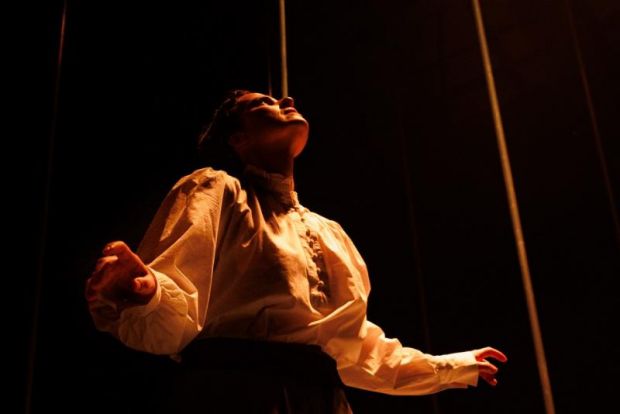The Machine Stops
The warnings implicit in E M Forster’s prescient 1909 short story recur and recur in various and related forms in books, essays, on social media in our time. AI, our surrender to technology in the name of efficiency and convenience, authoritarian control, our alienation from and destruction of Nature, etc, etc.
There can’t be any doubt that Forster intended his story as a warning against the denial of the physical body and of any restorative contact with Nature. I’m guessing that Briony Dunn has the same motivations – but she has also the great challenge of translating Forster’s twenty-five page of prose into theatre. We can admire her ambition, but her translation choices may have restricted exploration of the very issues and emotions that are the raison d’être of Forster’s story. Is this adaptation too faithful or not faithful enough? For instance, the question of who benefits from control of a bloodless, technocratic future world is not confronted. Or, in acquiescing did we bring catastrophe upon ourselves?

We come to understand that in this adaptation of The Machine Stops we are in a dystopian world, deep underground, entirely controlled by The Machine, which supplies surviving humans with every need – except direct contact with each other and with Nature. These humans believe – or have been led to believe - that the surface of the earth is uninhabitable. Communication is confined to some form of telepathy – controlled by The Machine – or occasional video messaging. Humans occupy their time with ‘lectures’ – i.e. an illusory exchange of ‘ideas’.
Dunn employs just two characters: a Mother (Mary Helen Sassman) – and a rebellious adult son Kumo in Forster, who lives entirely separate from her. There is no Narrator or narration as there is in the source material to explain their world, and no access to internal thoughts or emotions. Exposition about this world and the externalising of internal states is a matter of monologues and two exchanges between of Mother and Kumo - as well as Mother’s movements, (sometimes excruciatingly slow), forms of mime, and her exaggerated facial expressions – which can look like experiences of agony (I was reminded of Francis Bacon paintings) – suggesting her responses to The Machine’s control...

The power of The Machine and its impact on our emotions – and the characters’ experience of it - is immensely enhanced by Dunn and Niklas Pajanti’s superb, eerie and uncanny set design – dominated by sixteen open-ended vertical tubes, hanging in hazy space. We infer these are The Machine’s means both of supply – light and dark, food, medical treatment - and control of all information and mood. Pajanti’s brilliant lighting, Darrin Verhagen’s spooky omnipresent sound design, and Aron Murray’s blurry video projections – all of which are subject to abrupt, frightening and inexplicable changes - reinforce the sense of claustrophobia and the sad, sad sense that Mother is ‘happy’ there.
But despite the ingenuity of these things and their effect on our emotions, The Machine Stops is a situation, not a story – and therefore longer, at ninety minutes, than it needs. It’s ‘message’ is blunted. Once we grasp the situation – not always entirely clear due to Sassman’s delivery, at times overwhelmed by sound – what plot there is consists of the rebellion of Kumo against their incarceration and therefore The Machine. His glimpse of freedom should provide hope, but it’s too late. When you have surrendered all to The Machine, what happens when it stops? The play, and indeed the original story, suggest that these weakened, denatured humans are doomed.
Michael Brindley
Photographer: Hannah Jennings
Subscribe to our E-Newsletter, buy our latest print edition or find a Performing Arts book at Book Nook.

